
|
FEATool Multiphysics
v1.17.5
Finite Element Analysis Toolbox
|

|
FEATool Multiphysics
v1.17.5
Finite Element Analysis Toolbox
|
This example models heated steam at a constant temperature of 120 C flowing through a aluminium pipe with 3 cm diameter. Heat loss to the surrounding cool air (at 25 C and heat transfer coefficient of h = 60 W/m2 C) is computed for a plain pipe, and also a pipe where 200 cooling fins per meter has been added. The simulation results are also compared with theoretical solutions.
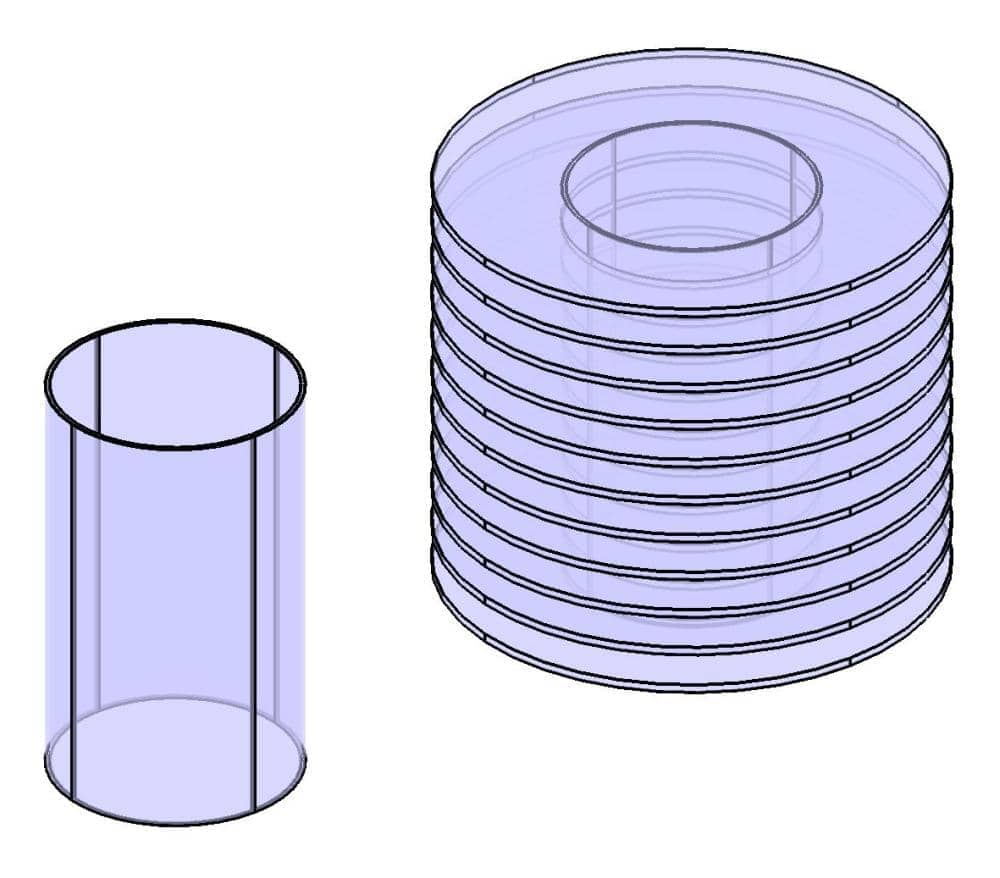
This model is available as an automated tutorial by selecting Model Examples and Tutorials... > Heat Transfer > Cooling Effect of Adding Fins from the File menu. Or alternatively, follow the step-by-step instructions below. Note that the CFDTool interface differ slightly from the FEATool Multiphysics instructions described in the following.
Press OK to finish the physics mode selection.
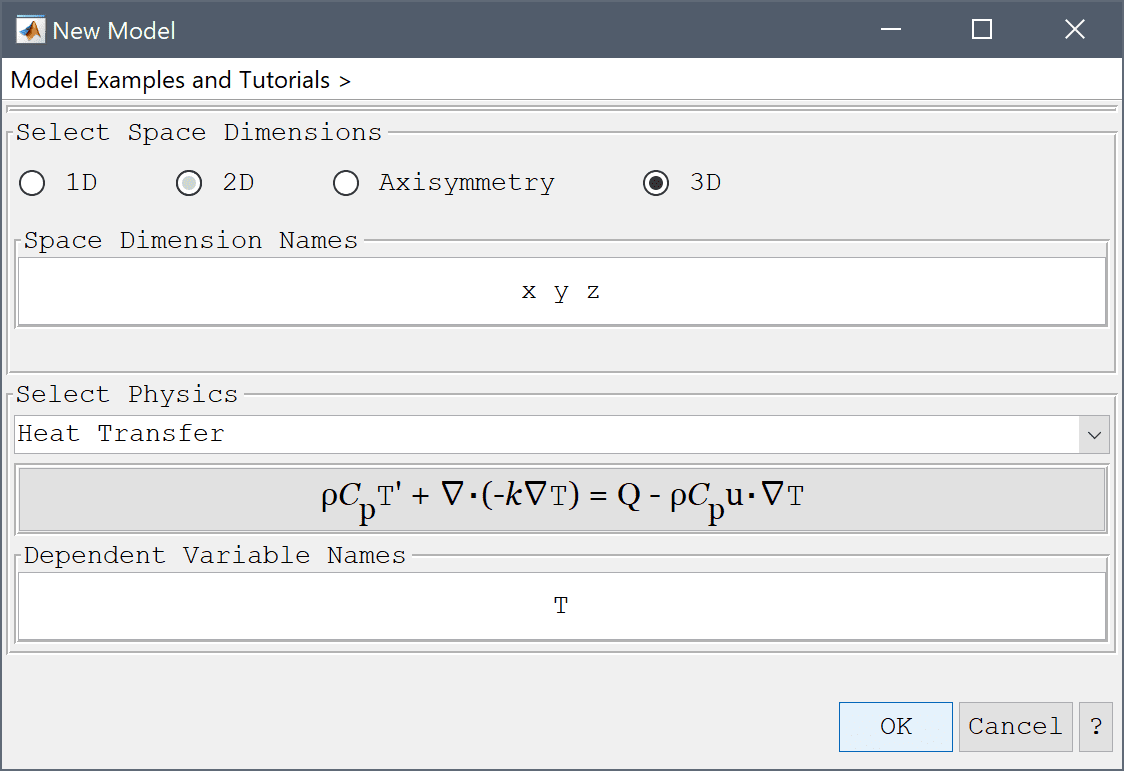
Due to symmetry it is sufficient to model a small section, here taken as quarter section of length 5 mm (this model would also be possible to reduce to 2D axisymmetry).
0.015 into the radius1 edit field.0.015 into the radius2 edit field.1/200 into the length edit field.0 0 1 into the axis edit field.0.0145 into the radius1 edit field.0.0145 into the radius2 edit field.1/200 into the length edit field.0 0 1 into the axis edit field.Then create a block overlapping a quarter and intersect it with the resulting cylindrical pipe shell.
0.015 into the xmax edit field.-0.015 into the ymax edit field.1/200 into the zmax edit field.Press the & / Intersect geometry objects Toolbar button to crete the final geometry shape.
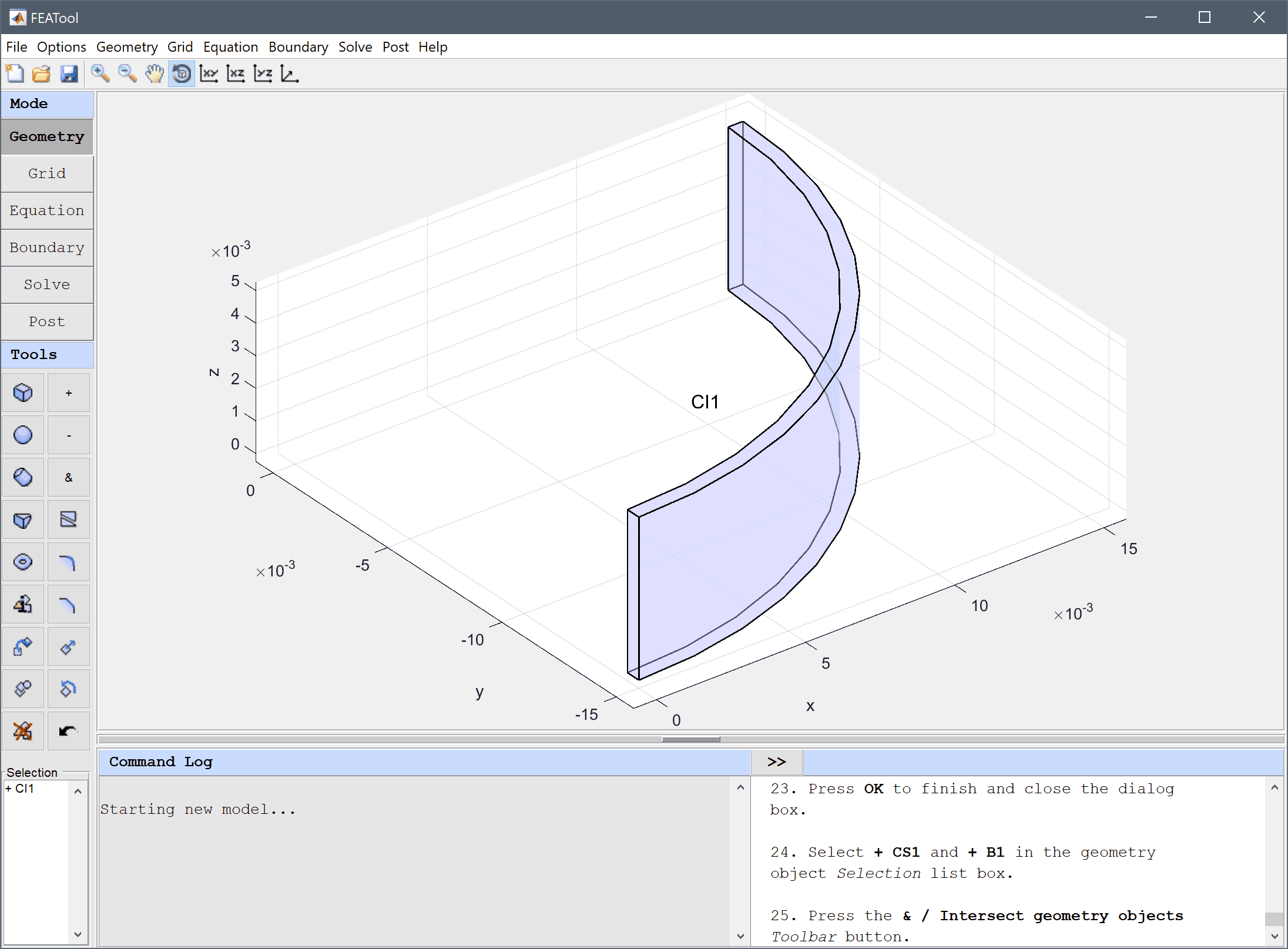
Enter 0.0005 into the Grid Size edit field and press the Generate button to call the grid generation algorithm.
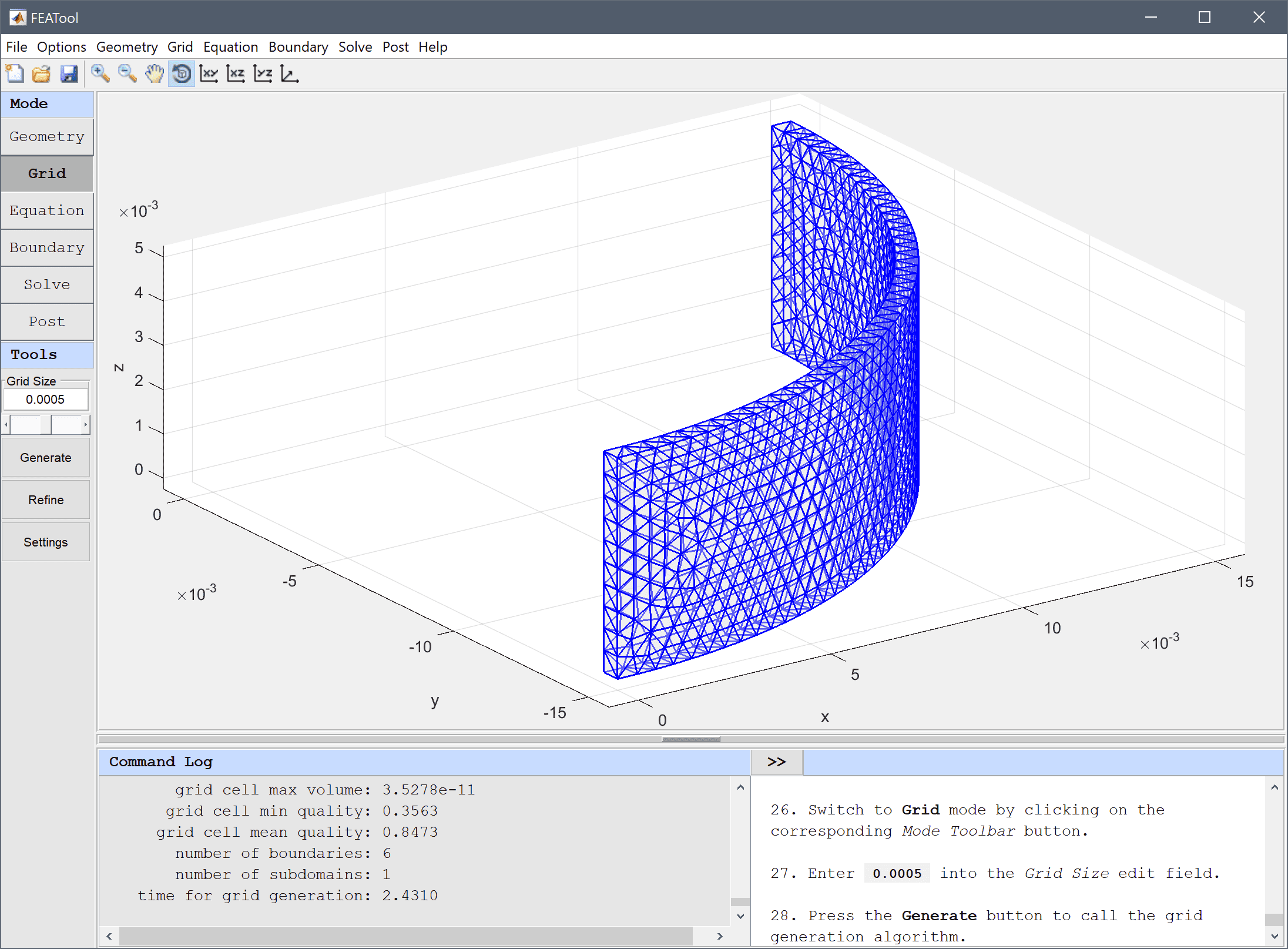
In the Equation Settings dialog box, set the thermal conductivity to 180 W/m C, the other coefficients will not be used, they can be left to their default values. Note that it is up to the user to define and use a consistent system of units for coefficients and parameters, here SI units is chosen. (Note that the Equation Settings dialog box may look different for CFDTool.)
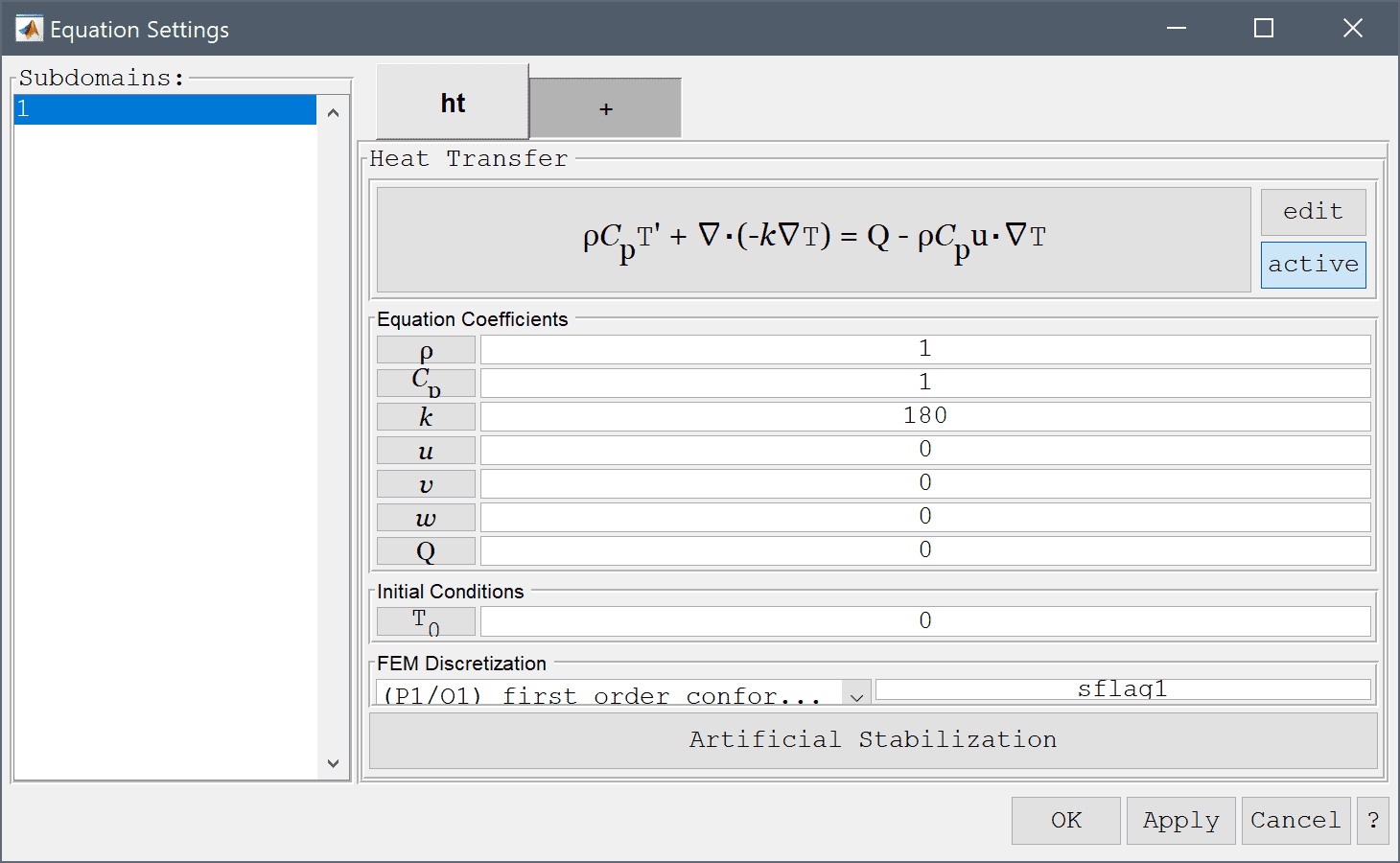
The Heat flux condition should be selected for the outer boundary, with a heat transfer coefficient 60 W/m C and surrounding bulk temperature of 25 C. This condition prescribes the rate at which heat is lost to the surrounding air (which is not modeled here).
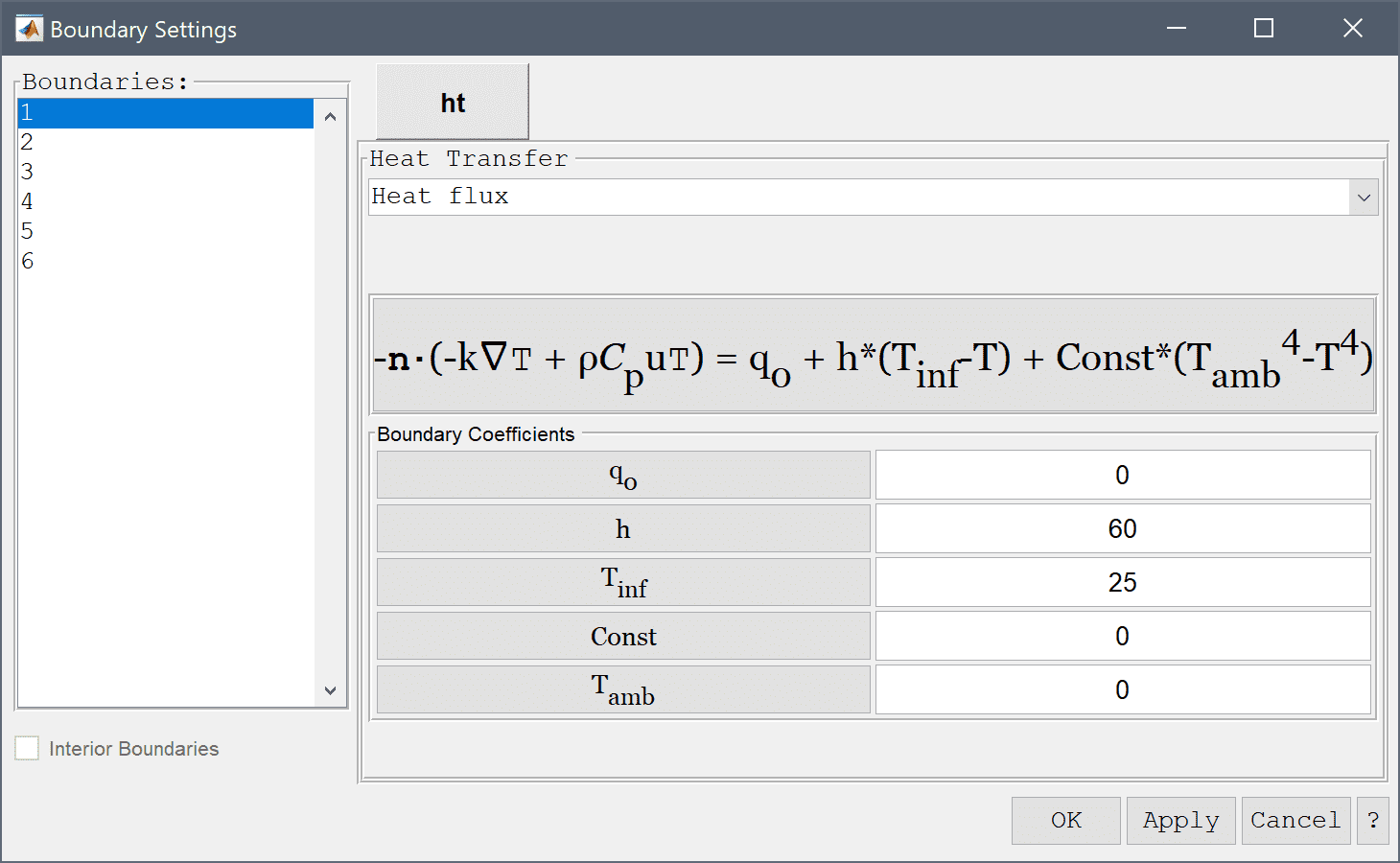
After the problem has been solved FEATool will automatically switch to postprocessing mode and show the computed Temperature where we can see that the outside of the pipe has been somewhat cooled due to heat loss.
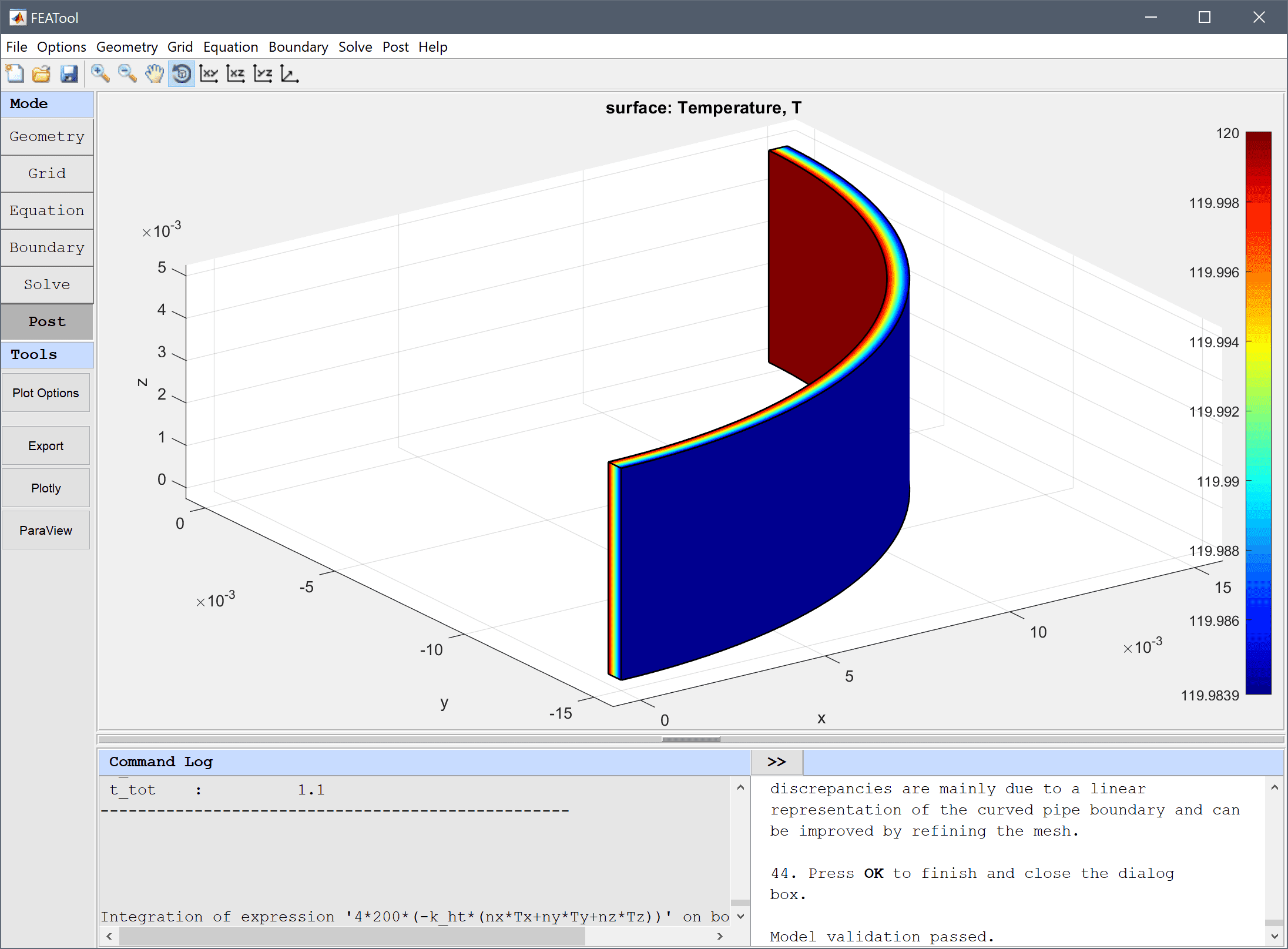
We also can calculate the computed heat loss by integrating the heat flux on the outer boundary and compare it with the theoretical solution.
Multiply the expression for the outward heat flux with 4*200 (accounting for simulation of a 5 mm quarter section) to get the total heat loss in W/m.
4*200*(-k_ht*(nx*Tx+ny*Ty+nz*Tz)) into the Integration Expression edit field.The computed value should be close to the theoretical reference value of 537 W/m. The small discrepancies are mainly due to a linear representation of the curved pipe boundary and can be improved by refining the mesh.
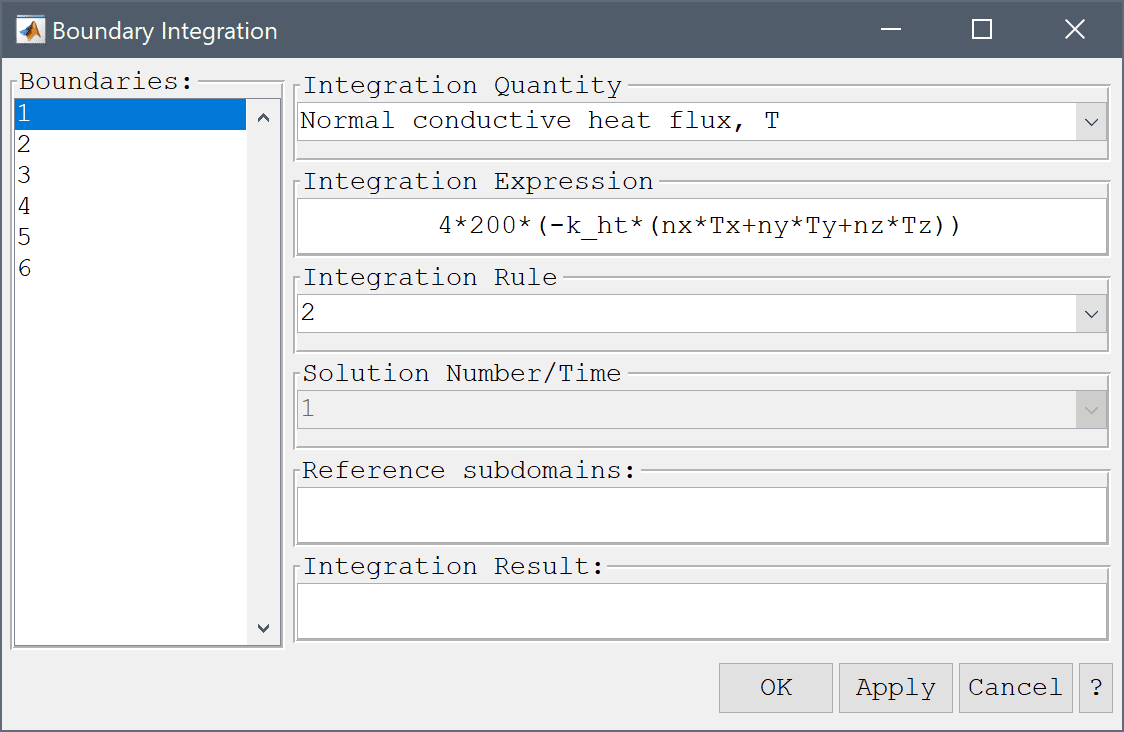
To compare the heat loss with the modified geometry, first go back to Geometry mode to add the fins.
Use the undo geometry objects button to recover the original input shapes.
Now two cylinders for the fins should be added to the top and bottom of the pipe.
0.03 into the radius1 edit field.0.03 into the radius2 edit field.1e-3 into the length edit field.0 0 1 into the axis edit field.0 0 into the center edit field.0 0 1/200-1e-3 into the center edit field.0.03 into the radius1 edit field.0.03 into the radius2 edit field.1e-3 into the length edit field.0 0 1 into the axis edit field.Extend the block to also cover the fins.
0.03 into the xmax edit field.-0.03 into the ymin edit field.Finally join the outer cylinder and fins, subtract the inner cylinder, and intersect with the block to generate the final shape.
Enter C1 + C3 + C4 - C2 & B1 into the Geometry Formula edit field.

Enter 0.0005 into the Grid Size edit field and press the Generate button to generate a mesh for the modified geometry.
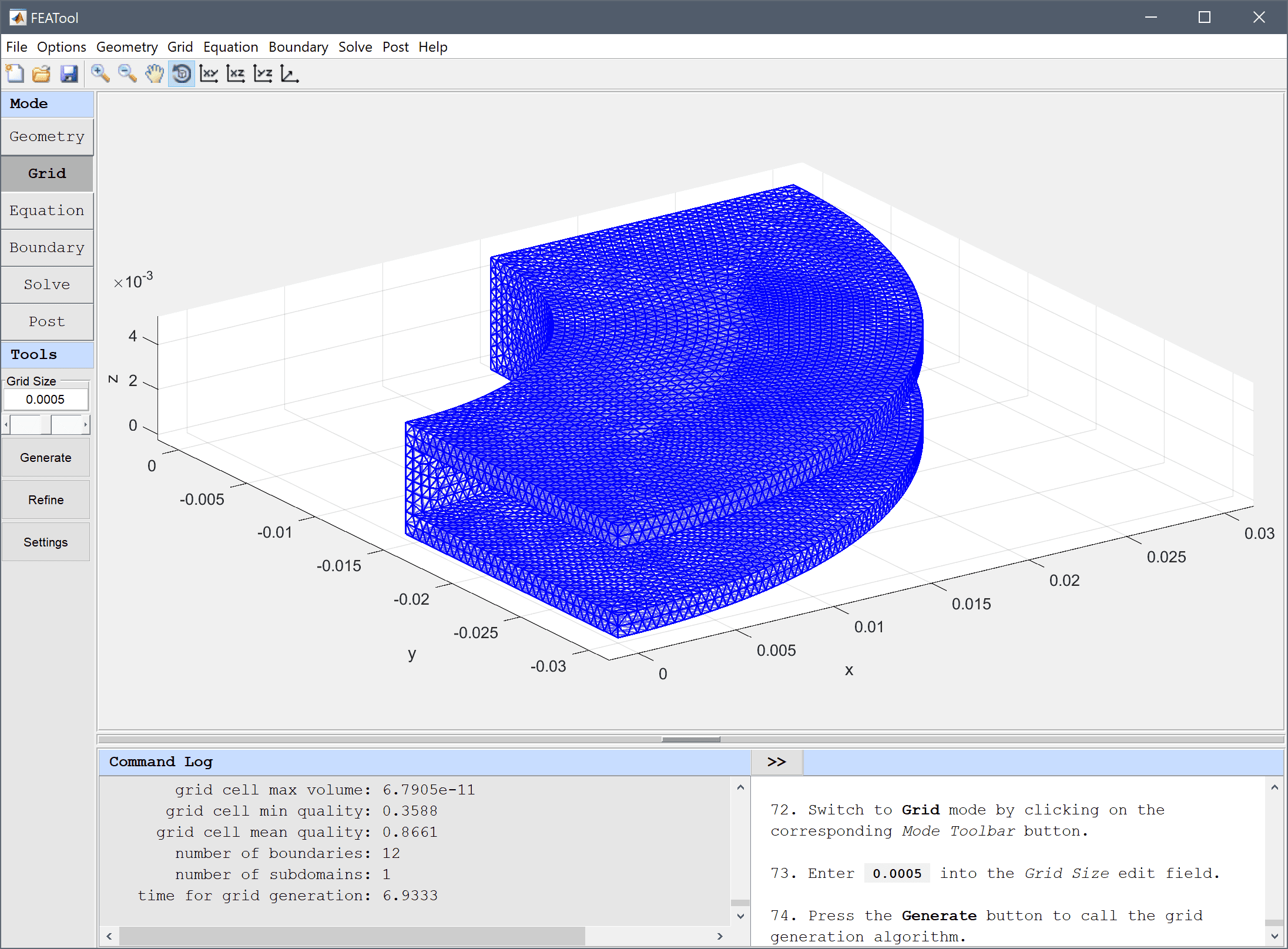
Set the boundary conditions similar to the first simulation with the original shape (with the difference that there now are more boundary segments due to the added fins).
120 into the Temperature edit field.60 into the Heat transfer coefficient edit field, and 25 into the Bulk temperature edit field.After solving we can clearly see how the fins help to cool the outer temperature.
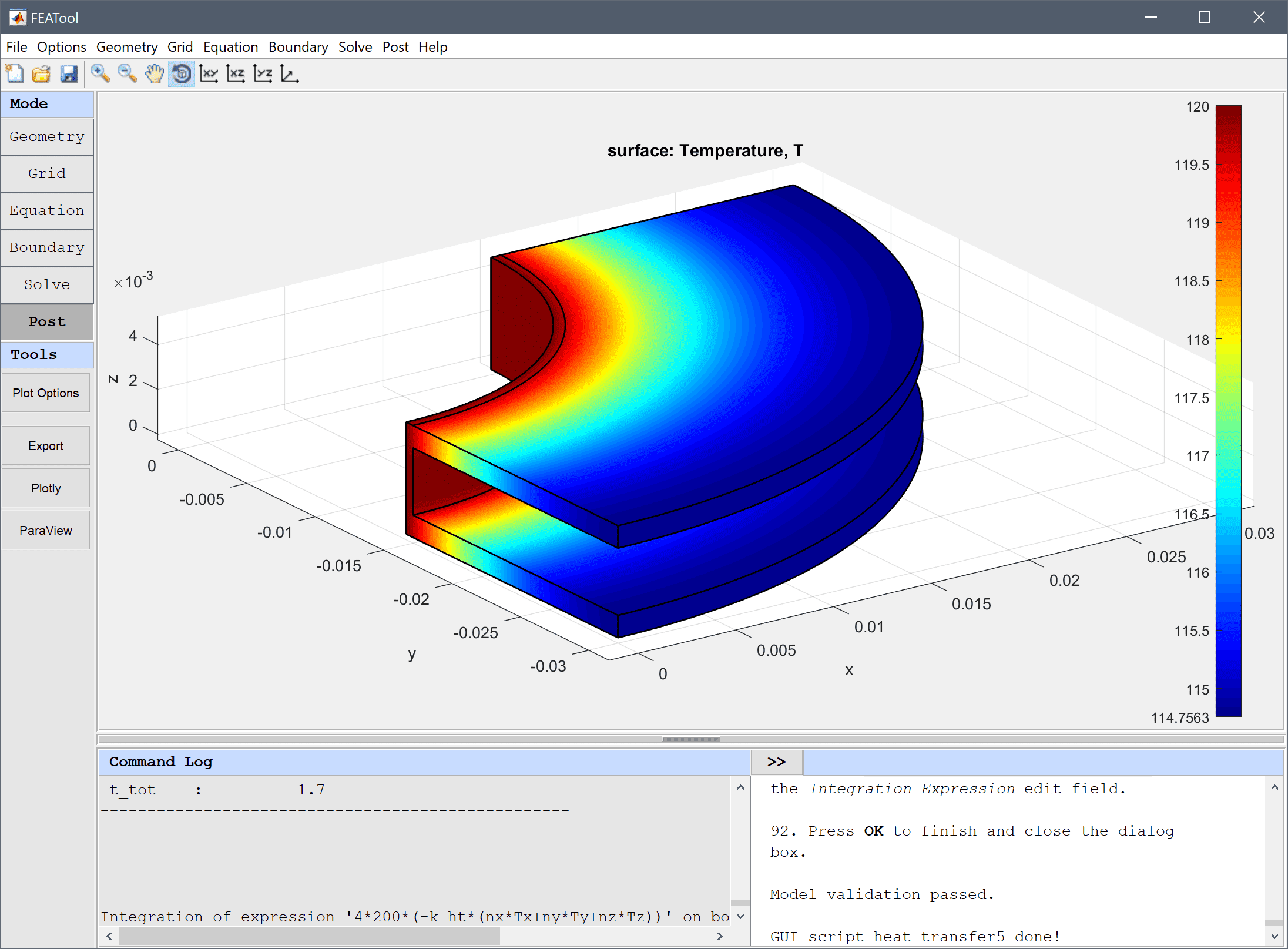
Perform boundary integration of the heat flux as before and compare with the theoretical result 5320 W/m, and note that with the added fins we now get almost 10 times more effective cooling due to the increased added surface area.
4*200*(-k_ht*(nx*Tx+ny*Ty+nz*Tz)) into the Integration Expression edit field.The cooling effect of adding fins heat transfer model has now been completed and can be saved as a binary (.fea) model file, or exported as a programmable MATLAB m-script text file, or GUI script (.fes) file.
[1] Cengel, Yunus A., Heat Transfer: A Practical Approach, WCB/McGraw-Hill, 1998.